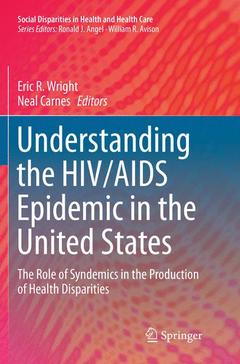Description
Understanding the HIV/AIDS Epidemic in the United States, Softcover reprint of the original 1st ed. 2016
The Role of Syndemics in the Production of Health Disparities
Social Disparities in Health and Health Care Series
Coordinators: Wright Eric R., Carnes Neal
Language: English
Subjects for Understanding the HIV/AIDS Epidemic in the United States:
Keywords
HIV/AIDS Epidemic in the United States; HIV/AIDS and Social Aspects of Disease Transmission; Health Disparities in HIV/AIDS; High Rates of HIV and/or AIDS within the United States; Morbidity and Mortality Weekly Report; Pneumocystis Pneumonia among Drug-Using Gay Men; Health Disparities among Bisexual Men; Social Risks of HIV among Transgender Women; HIV Prevention and Care for Black/ African American; HIV Prevention and Care for Latinas in the United States; HIV and Incarceration among African American Men; Severe Mental Illness; HIV Housing and Homelessness; Syndemic Theory in HIV/AIDS; infectious diseases
Publication date: 06-2018
Support: Print on demand
Publication date: 08-2016
Support: Print on demand
Description
/li>Contents
/li>Comment
/li>




